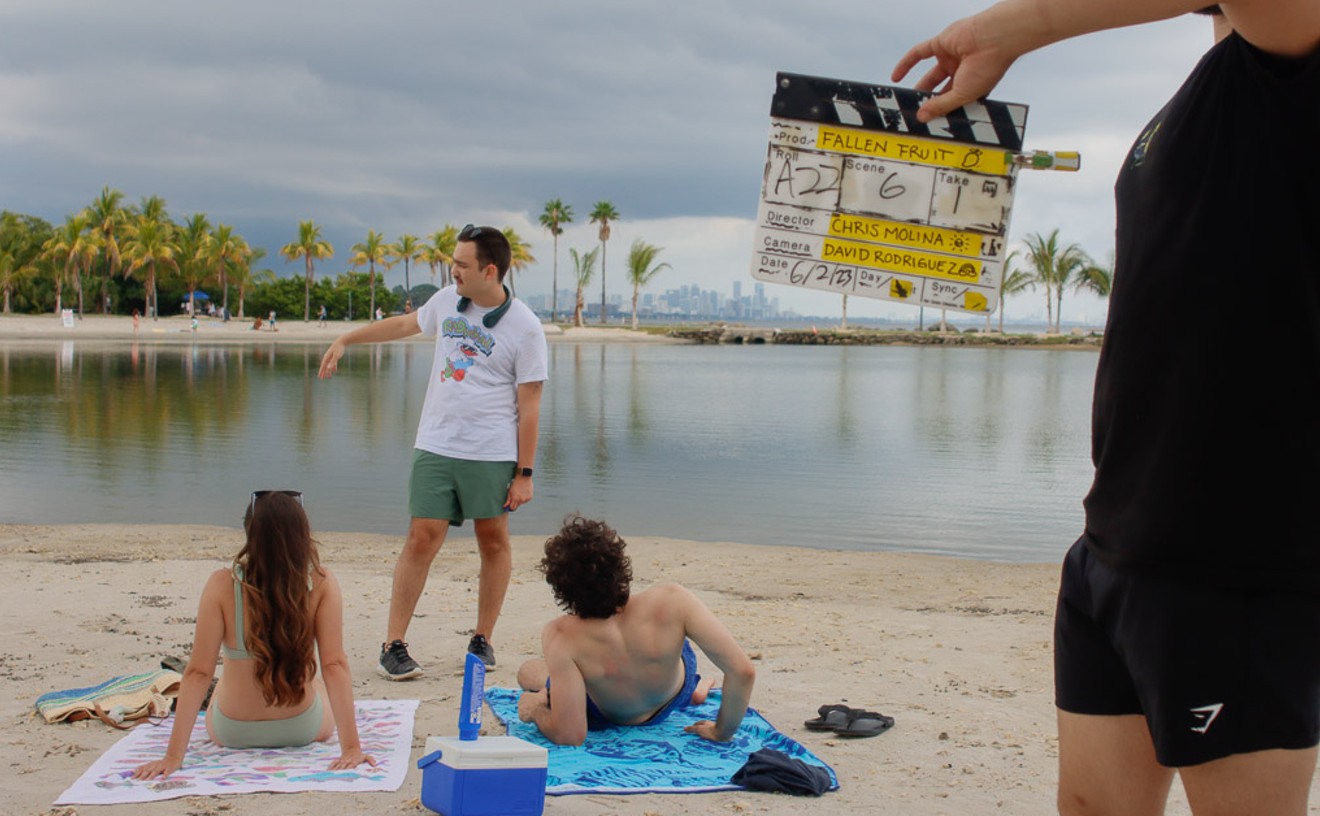In fact, the word fuck is the subject of one large painting in the show. Here, Casta*eda reproduces an actual dictionary entry for the f word in white letters printed on red, complete with its phonetic pronunciation, a number of definitions, and even some etymology.
Another painting spells out the word dream and its definition in a similar manner, this time in white on a sky-blue background. Elsewhere two works depict the verbs die and get, with entries taken from a bilingual dictionary and providing the words' Spanish translations. The terms chosen for this monochromatic series of works (To Be Bilingual. Lesson 2: Verbs) amount to a rather bleak primer of an immigrant's lexicon. Caste*eda's list of key words moves quickly from dream, evoking the idealized promises of American materialism, to fuck, which reveals a more aggressive reality. The word die suggests a spiritual breakdown, and also expresses the uncomfortable thought of being laid to rest in a land other than one's own. Perhaps most significant is get, as in "to acquire," but also as in "to get along," "to get back home," or, more important, "to get by" and "to get ahead."
Ultimately these words have no real meaning in this context, although they convey, as the artist knows, a certain shock value or sentimentality. To someone such as Casta*eda, who doesn't use the words to communicate, who rejects their significance, they amount to little more than static images on a dictionary page. By placing the words on a canvas, the artist further robs them of their meaning; they become interchangeable icons whose purpose is merely to decorate a wall.
Another series of monochromatic paintings, this one entitled To Be Bilingual. Lesson 1: About Attributes of a Plane, has been hung on one side of the gallery. Each of these large paintings, in Art Decoish pastel colors, features a word referring to one area of a rectangular canvas: center, corner, et cetera. These terms are painted in white, in the bold graphic style used for magazine advertisements. At first glance, the words seem to concern only the artist's need to relearn art terminology in English in order to achieve success in this country. But soon Casta*eda's hidden agenda becomes more clear. Most of the words have double meanings, which refer to broader issues of social order and personal displacement: left, right, front, behind, border.
Ways in which art institutions traditionally have classified artists by nationality constitutes another of Casta*eda's themes. To illustrate this practice, she has created photographic representations of printed wall cards pertaining to works in the collection of the Philadelphia Museum of Art. These identify, for example, the artist Eva Hesse as "American born Germany," Constantin Brancusi as "French born Romania," and Wassily Kandinsky as "French born Russia." Two other labels nearby display Consuelo Casta*eda's name with a blank space below each, one white, the other black. The decision about her identity, one supposes, will be left for history.
Casta*eda, born in 1958, was a celebrated artist and art teacher in Cuba. Her greatest strength lies in her technical dexterity. Throughout the Eighties she used this talent in appropriating a variety of contemporary and historical art styles, classifying herself as a postmodernist. The pieces in this show exhibit the influence of a number of American art movements: the advertising esthetic of pop art, Seventies' minimalism, and language-based conceptual artists such as Barbara Kruger and Jenny Holzer, whose work tends toward a deconstruction of social and political issues.
The Cuban artist might see her act of taking on, or taking over, styles usually identified with the culture she professes to reject as one way of subverting that very same culture. In this manner, she demonstrates that "to be bilingual" means nothing more than knowing the tricks of the trade. But Casta*eda shows such blatant admiration for accepted American artistic and conceptual principles that she comes close to defeating her own purpose. Overall, her work can be interpreted as an angry attempt to prove that artists living in Latin American countries, part of the so-called artistic periphery, are up to snuff with those trained in European and American cosmopolitan centers. Through her polished work, Casta*eda defends her victimization at the hands of Western prejudices so defiantly that the paintings can assume the character of mere elements in a bicultural spitting contest, with Casta*eda hawking the first loogey.
These inherent contradictions do not make Casta*eda's inquiries into definitions of place and people any less interesting or valid. In Miami, a city that exemplifies the cultural, social, and political significance of language, her new work is effectively disquieting as it confronts some of the accepted truths about what lies beyond the language barriers.










